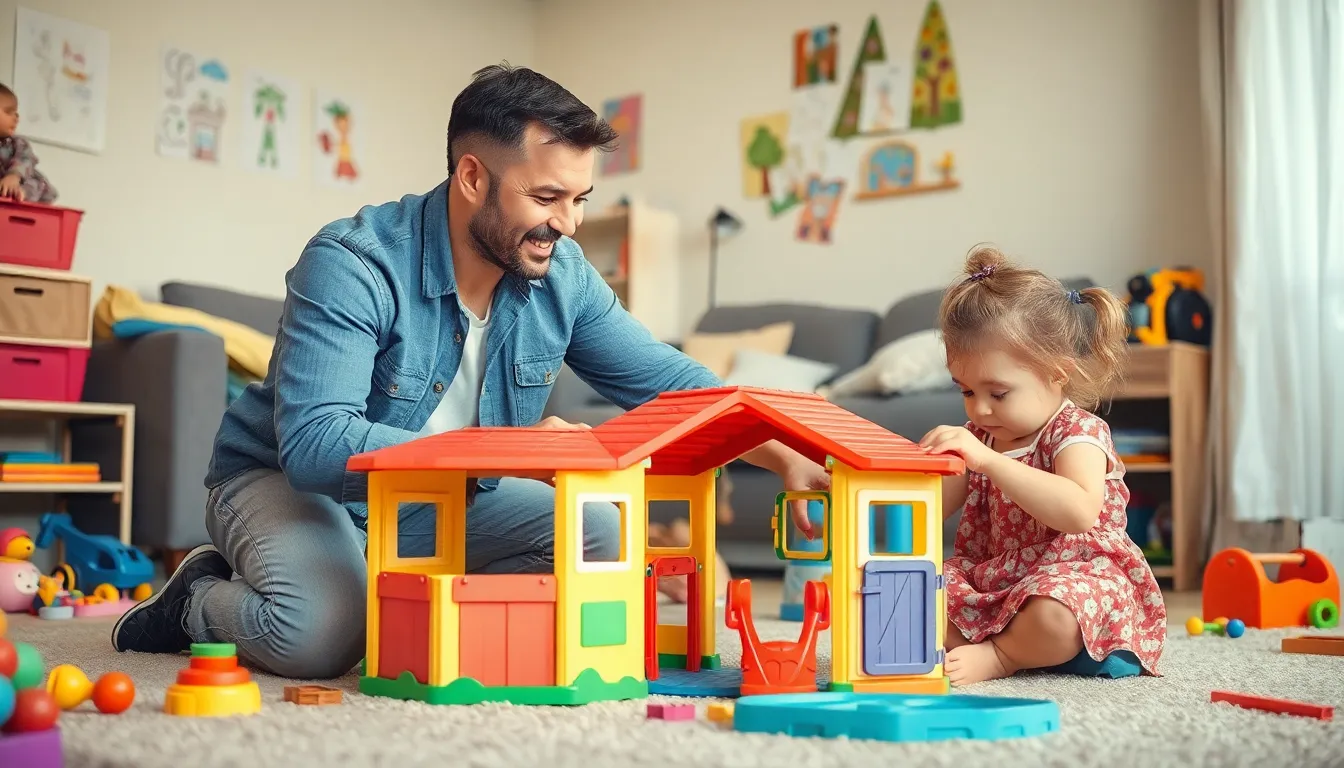Adopting a child can feel like preparing for an epic adventure—complete with paperwork, waiting periods, and a sprinkle of emotional rollercoasters. But don’t let the daunting process scare you away! Navigating the adoption journey is not just a legal obligation; it’s a chance to create a loving family and change a child’s life forever.
Table of Contents
ToggleOverview of Adoption Process
Adoption involves several key steps that vary based on the type and location of adoption. Typically, prospective parents start by researching adoption agencies and understanding their specific requirements. Engaging with an agency provides insight into the various avenues available, like domestic, international, or foster care adoptions.
Next, completing an application marks the official beginning of the process. Agencies often require home studies, which assess prospective parents’ suitability. Home studies include interviews and background checks, ensuring a safe environment for the child.
After the home study, prospective parents usually participate in training sessions. These sessions cover topics such as attachment, trauma, and parenting strategies, preparing them for the challenges of adoption. Following the completion of training, the wait for a match with a child begins. This period’s length often varies, depending on the child’s age and circumstances.
Upon receiving a match, parents may have the chance to meet the child. This meeting allows both parties to begin forming a bond. If the match feels appropriate, families typically enter a transition period that may involve visits and gradual introduction.
Finalizing the adoption involves legal steps, including court appearances. Courts review all documentation to ensure adoption aligns with the child’s best interests. After a final decree is granted, the child becomes a permanent member of the family.
Nurturing a new relationship takes time, patience, and understanding. Each family’s journey through the adoption process is unique, reflecting individual needs and circumstances. This experience can profoundly impact everyone involved, fostering love and connection.
Types of Adoption

Adoption encompasses various types that cater to different needs and circumstances. Each type serves unique purposes and involves specific processes.
Domestic Adoption
Domestic adoption involves the placement of a child within the same country. Parents can adopt infants or older children through agencies or private arrangements. Agencies often provide support during the matching process. Legal requirements vary by state, but many states require a home study and background checks. Timeframes for domestic placement can range from a few months to several years, depending on the child’s age and needs.
International Adoption
International adoption occurs when parents adopt children from other countries. This process includes navigating complex legal regulations and varying procedures. Parents typically work through accredited agencies that specialize in specific countries. Each country has its own requirements for adoption, including home studies and legal documentation. Timeframes vary significantly, ranging from one to five years, influenced by both the child’s country and the specific agency involved.
Foster Care Adoption
Foster care adoption allows parents to adopt children in the welfare system. Many of these children face challenges such as trauma and emotional needs. States manage foster care programs, and prospective parents must complete a home study and training. The transition may involve placements before finalizing an adoption. This type of adoption aims to provide stable, loving homes for children who may have experienced instability in their lives.
Steps in the Adoption Process
The adoption process involves several critical steps that vary based on type and location. Each stage requires careful consideration and commitment from prospective parents.
Pre-Adoption Preparation
Researching adoption agencies forms the initial step in preparation. Agencies provide specific requirements, enabling prospective parents to understand their options. Completing an application marks the official commencement of the process. Prospective parents often must gather essential documents, including identification and financial information. Training workshops frequently follow, equipping parents with knowledge about attachment and behavioral strategies. Support groups also offer opportunities to connect with other adoptive families, enhancing the preparation experience.
Home Study Process
The home study process assesses parental suitability through comprehensive evaluations. Social workers conduct interviews to gather insights into the family’s dynamics, values, and parenting philosophy. Background checks assess safety and security in the home environment. Home visits provide a glimpse into daily life and the home’s suitability for a child. Documentation, such as financial statements and health records, typically supports the evaluation. Ultimately, this thorough examination ensures that the adoptive family supports the child’s well-being.
Matching with a Child
Finding a match often follows successful completion of the home study. Agencies consider various factors, including age, background, and needs of the child, along with preferences expressed by prospective parents. This stage can include waiting periods, which vary significantly based on the specific circumstances. When a match occurs, preliminary information about the child is typically shared. Meetings may then be arranged to facilitate bonding and foster connections. These interactions play a crucial role in easing the transition for both the child and the adoptive family.
Finalization of Adoption
Finalizing adoption legally establishes the parent-child relationship. Court proceedings often take place to ensure compliance with laws and regulations governing adoption. A legal professional typically represents the adoptive parents during this process. Courts require various documents, including the home study report and consent forms, for approval. After completion, adoption decrees officially grant parental rights. The celebration of this milestone often marks the start of a lifelong commitment to the child’s growth and development.
Challenges in the Adoption Process
Adoption presents various challenges that prospective parents encounter throughout their journey. Understanding these hurdles is crucial for navigating the process successfully.
Emotional Challenges
Emotional challenges can arise during the adoption process, impacting both parents and children. Feelings of anxiety and excitement often coexist, creating a complex emotional landscape. Grieving the loss of the biological family may occur for both the child and the adoptive parents, making it essential to address these feelings. Attachment issues can also surface, complicating connections between the child and adoptive parents. Bonding takes time, patience, and understanding. Support systems, such as counseling or support groups, help alleviate emotional stress, fostering a nurturing environment for everyone involved.
Legal Challenges
Legal challenges pose significant obstacles in the adoption process. Adoption laws vary by state and can influence timelines and requirements. Navigating these regulations often involves understanding different adoption types and the specific criteria for each. Completing necessary documentation, such as consent forms and home study reports, is vital for compliance. Court proceedings may also extend the timeline, adding further complexity to the process. Engaging a knowledgeable legal professional ensures adherence to all requirements, facilitating a smoother transition to finalize the adoption.
The adoption process is a transformative journey that brings together families and children in need of love and support. While it presents challenges and requires dedication, the rewards far outweigh the obstacles. Each step taken is a testament to the commitment of prospective parents who aspire to create a nurturing environment.
By understanding the intricacies of adoption and seeking support along the way, families can navigate this path more confidently. The journey may be long and emotional but ultimately leads to the profound joy of welcoming a child into their lives. Embracing this adventure can foster lasting bonds that enrich both the family and the child’s future.







